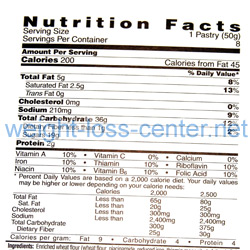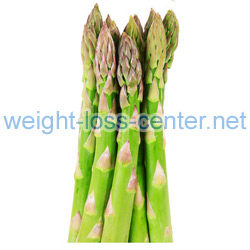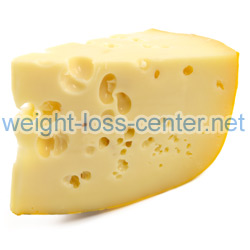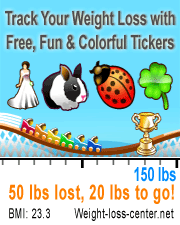|
|
 The R&D Cookie Diet? Find Out More in the Weight Loss Forum Can Cookie be an effective diet option? One user at least swears by its efficacy as she swears losing at least forty pounds using the cookie diet. The weight loss forum member and family counselor claims that she embarked on a two-month project using the cookie diet to much success.
This is actually not a new diet program. Known in the industry as the R&D Cookie Diet, the weight watcher is advised to consume six cookies throughout the day to manage the hunger. Of course, you can’t survive on cookies alone so the diet plan allows for one meal consisting of six ounces of fish, turkey or lean chicken and a cup of vegetables.
The R&D cookie is named after the intensive research and development by the scientist who invented the product. It was mean to control hunger pangs, promote weight loss rapidly and allows the user to keep to his o her daily calorie quota and not have to sneak around for a piece of a pie or ice cream when nobody is looking.
The ingredients of the cookie are not known because the scientist had the sense enough to apply for a patent but it does have several flavors including chocolate, banana, coconut and blueberry. Instead of cookie, the weight loss product is also offered on shake mix form.
One thing about the cookie, however, is that it doesn’t taste good so as not to encourage people to forget about their health and continue with the lifestyles knowing they have a backup plan.
The weight loss forum member over at the website Weight-Loss-Center.net discusses the cookie diet and many other ways to lose weight. One good thing about these forums is that they are run by the dieters themselves so the topics are usually dead-on in terms of actual need.
Kstraka73, a new member, posts the diet program allows for a series of mini-meals throughout the day so the weight watcher can control the cravings to eat food. Nature abhors excesses and that’s the same with the human body, which only takes what it needs and any excess nutrients will only eliminated.
The R&D Cookie diet program, however, is not for everybody even though its advocates swear by its weight loss properties. There’s no magic formula to the cookies because they are just basically high fiber and high protein grain bars which can become a good meal substitute especially when your body doesn’t really need a full meal.
The R&D cookie diet is just one of the many programs you can read on the weight loss forum. Every advise is taken from personal experience and you can mix and match according to the diet plans and maybe introduce some changes that suits your lifestyle and temperament.
The forum also provides a platform where members can support each other. There’s nobody who can understand what somebody struggling with weight feels than a fellow weight watcher. And sometimes a few encouraging words will be enough to push on even when it seems impossible to do so.
If you are going on a food-specific diet, whether you are going for low carbs, low fat, or low calories, you need to understand how to read food labels (also known as nutritional labels). The FDA (Food and Drug Administration) regulates the food industry to try to help you be sure you are getting what you think you are getting. Still, packaging can be misleading, and reading the label may be the only way to be sure that you know what ingredients are in your food.
 When dieting it is important to understand food labels so that you are aware of the amounts of calories and fats foods contain. A law known as the Nutrition Labeling and Education Act made sure that companies must include what the name of the manufacturer is and where it is located, the common name of the product, and the net contents of weight, how much is in it, and an ingredient list that starts with the ingredient that has the largest amount and goes to the smallest amount, at the bottom of the list. The nutrition facts are based on one serving of food, and the amount that is a serving must be noted in the label. It should be noted that you can determine how many calories are in something based on the number of grams of fat (1 gram is equal to nine calories), protein (1 gram is equal to four calories), carbohydrates (1 gram is equal to four calories), and alcohol (1 gram is equal to seven calories). The label will show how many calories total are in a serving, and how many calories are from the fat. You can easily tell how much fat is in a product by how many calories it takes up.
The FDA also has several requirements regarding labels, such as lean, high-fiber, low fat, healthy, and other such terms. It is worth researching if you are planning to have a low fat diet, or any other such label, as this helps you know exactly what the label means, rather than simply guessing that your definition is the same as the company’s definition.
For those of us who are trying to lose weight, one of the most important things to understand when reading a food label is the serving size. Although many foods you can buy seem low in calories, they often aren’t as good as you think. This is because the serving size is made very small so that the product appears to contain few calories and grams of fat. However, when you actually have a snack or meal and eat twice or three times the serving size on the label, the amount of calories and fats can go up substantially.
All in all, food labels are there to help you as the consumer make educated decisions, and once you understand the package labeling, you will find that you can make better choices on the nutrition you intake, along with having more ease following a dietary plan or avoiding allergies. Every so often the labeling requirement changes, often to become stricter, so keep an eye out for any news regarding the FDA and food labeling.
Other Related Posts and Articles you May Find Interesting: “Diet Treats Foil Weight Loss”, “Are Healthy Foods Really That Healthy”, “Tips for Making Healthier Food Choices” and “Ways to Cut 100 Calories Daily”.
Though it may come as a surprise to some, garlic has many health benefits, and the possibility of weight loss is one of them. As researchers have recently concluded, there are a multitude of health benefits to adding garlic to a dish, even when cooked. It contains allicin and diallyl sulfide, two ingredients that offer particular health benefiting boosts. Unfortunately, allicin is destroyed during the cooking process, but because of the cooking, other healthy compounds are formed that continue garlic’s health-benefiting abilities.
 Dealing with a little garlic breath may be worth it if you want to try to harness the weight loss benefits of garlic. Garlic can kill or prevent bacterial growth of several varieties, including the constantly mentioned Salmonella, along with yeast. In some cases, it can go so far as to prevent cancer. Garlic can help stabilize cholesterol levels, lowering the bad and raising the good. There is some speculation to the idea that garlic could prevent strokes and heart attacks by getting rid of the clots that choke up the arteries. Weight loss is also believed to be a side-effect of eating garlic, though you need to talk to your doctor to determine just how helpful garlic could be to your weight loss plan.
Some scientists say that eating three cloves of garlic daily should help you reap the healthy benefits garlic has to offer. This may vary from person to person, so check with your doctor before deciding on a regime that will lead to a garlic-y morning breath. If you enjoy the taste of garlic, however, you should be pleased to know that most forms of garlic are believed to have the health benefits that garlic has to offer.
However, even natural foods do have a downside. Consuming too much garlic can result in diarrhea or indigestion, and it shows that like everything, it is best in moderation. If you want to use garlic for weight loss (based on the antioxidants in it), try to include it naturally in the food dishes you prepare, and remember to eat the correct proportions.
Weight loss is best achieved through a combination of a healthy diet and specially chosen exercise, according to multiple studies on the subject. Talk to your doctor before deciding on a weight loss regime so that you can be sure you have chosen the right method of losing weight that is not only safe, but efficient. Each person is different, and everyone has different weight loss goals, so it is good to keep these in mind when deciding on a weight loss plan.
Other Related Posts and Articles you May Find Interesting: “Weight Loss Foods with Healing Powers”, “Best Aphrodisiac Diet Foods”, “Spicing Up Weight Loss” and “Flu Fighting Diet Foods”.
To most people, niacin is simply another addition to the label on a vitamin bottle—but in actuality it offers many health benefits that are often overlooked. Niacin, or vitamin B3, is one of the all-important “B vitamins” and plays an important role in the body, but what exactly is niacin? Niacin is referred to as a “water soluble” vitamin. This means that it can be taken in large amounts and the excess, or what the body doesn’t use up, will not be stored but instead will be passed on through the urine.
 Eating natural sources of niacin, such as asparagus, can help to lower cholesterol and may help you shed a few pounds too. Niacin is one of many nutrients that are absolutely essential to human health. A deficiency in niacin can result in a condition known as pellagra. This condition causes diarrhea, lesions on the neck, thickening of the skin as well as dermatitis, difficulty digesting food, and can even cause dementia, delirium, and death. The daily recommended amount for niacin is 5 – 12 mg for children, 14 mg for women, and 15 mg for men, although men and women can safely consume up to 35 mg per day without adverse effects. Large doses of niacin can result in skin irritation or dryness, indigestion, and liver toxicity; however these side effects can usually be avoided by breaking up the dosage throughout the day or by taking a slow-release supplement of niacin.
So, what health benefits does niacin have to offer? As with other B vitamins, niacin is an essential element used in the process of cellular development. The enzymes contained in niacin aids in producing a reaction in the body’s cells which helps to build and repair cells. The potential for this extends to everything from blood cells to skin cells, which is why many companies are exploring the inclusion of niacin in anti-aging skin care products. In addition to creating new cells, niacin also helps to widen the blood vessels, which increases the amount of oxygen the blood can carry to all of the cells in the body. While this has obvious benefits for internal cellular health, many people often report a “youthful glow” to the skin due to the increase in blood flow to skin cells.
Cellular production is a fantastic benefit that niacin offers, but the most talked-about trait of this vitamin is its ability to boost one’s metabolism. Niacin is used to break down fats and convert carbohydrates into glucose to produce energy. While niacin supplements can help aid people in the process of losing weight, it usually does not provide single-handed extreme results. Niacin can, however, provide one with a little more energy which can encourage more activity throughout the day—thus resulting in weight loss!
Speaking of weight loss, there are some who believe that niacin also helps to fight sugar cravings (for more information, see the post “Fighting Sugar Cravings“). This is likely due to niacin’s key involvement in the metabolism of glucose in the body.
Niacin can also be a huge benefit to those who suffer from high cholesterol. There is quite substantial evidence to support the theory that niacin can regulate a person’s LDL (bad) cholesterol by increasing the number of HDL (good) in the body. It’s probably not a good idea to take prolonged or high doses of niacin to combat high cholesterol unless one is doing so under the guidance of a doctor, as too much niacin can lead to liver troubles.
Supplements aren’t the only way to get a daily dose of niacin, though! There are plenty of everyday foods out there that are great sources of niacin. Meat such as chicken, beef, and fish are excellent sources of niacin, as are dairy products and eggs. Avocados, tomatoes, leafy green vegetables, broccoli, asparagus, legumes, whole grain bread, and nuts also contain niacin. Satisfying one’s daily need for niacin is simply a matter of eating a good balance of the foods that are high in this impressive vitamin.
Other Related Posts and Articles you May Find Interesting: “How Vitamin B12 Improves Weight Loss”, “Link Between Vitamin D and Weight Loss”, “Stress Reducing Diet Foods” and “Weight Loss Vitamins in Your Diet”.
Allergies seem to one of life’s great nuisances. Because they reappear each year, they seem to be one of those things you just have to live with – or do you? The incidence of allergies seems to be rising in the recent years, making scientists wonder why this is. But many doctors and researchers are beginning to think it’s the immune system which might be to blame. With a lower immune system function, the body may be more prone to have symptoms of allergies, even if the person has never had allergies before. By using probiotics, many scientists feel that a person will not only be able to treat allergies, but also to prevent them.
 Yogurt isn't the only food that contains probiotics - aged cheese, microbrew beer, miso and wine are also sources. Why Probiotics Help the Immune System
Many don’t realize just how important the digestive system is. While it’s understandable that this system helps to break down foods into nutrients which can be used by the body, it doesn’t seem to do much more than that. But in your digestive tract, in your intestines, are many little bacteria which are helping to keep you healthy. It’s not surprising that the immune system doesn’t work as well when you eat poor foods, but it’s not just the foods that are causing the immune system to suffer. Since your digestive system can’t break down these foods properly, the immune system doesn’t get the energy it needs to continue to work well.
The intestines need to have the healthy bacteria around in order to digest food. In times of poor eating and high stress, the bacterium is working overtime to help break down foods. The bacteria work so hard that it can be overwhelmed by its responsibilities and have troubles reproducing. This leads to an imbalance of bacteria, which then causes digestion to be affected, which leads to a slow immune system.
Probiotics and Your Allergies
When your immune system is working well, it can combat the allergens in the air. Thus, if you begin to take probiotics as a part of your daily supplement program, you will find that the allergies you have suddenly gained are now no longer a problem. In addition, taking probiotics all year long can help you to avoid having allergy attacks at all. Studies are also showing that children who have probiotics supplements will also have a much lower risk of contracting allergies or having severe allergic responses.
It’s simple to add probiotics to your daily life with supplements or with yogurt with added bacteria. Other foods that contain probiotics are: aged cheese, cottage cheese, microbrew beer, wine, miso, kimchi, kefir, pickled ginger, tamari, tempeh, sauerkraut and brine-cured pickles.
While you might be used to avoid bacteria in your life, this is one sort of bacteria which will allow you to breathe easy during allergy season. Just make sure to take the probiotics on a daily basis in order to see the maximum results. With probiotics, you have a cheap and easy way to handle allergies before they start and if they start. Though this might seem to be a simple fix, it’s one that works better than some allergy medications.
Other Related Posts and Articles you May Find Interesting: “Weight Loss Foods with Healing Powers”, “Weight Loss Using Probiotics”, “Healthy Milk Alternatives” and “Best Anti-Aging Diet Foods”.
If your goal is to lose weight, then here are 10 no-nonsense weight loss tips that you can follow to make sure that you’ve got yourself at the best advantage for losing weight and keeping it off. The trick to losing weight is to work with your metabolism, encouraging it to run at a higher level and not drop down. The higher your metabolism, the more quickly your body will burn through calories – both the ones you eat and the ones you have stored as body fat.
 Losing weight takes many small changes to your diet and lifestyle. Try these 10 no-nonsense weight loss tips to jumpstart your diet program. Weight Loss Tip #1: Drink lots of water – You’ve heard it time and time again and it’s never been truer than when you’re trying to shed those extra pounds. Water is an integral part of keeping your metabolism running well, so keep water around at all times to ensure that you take in those necessary 8 glasses every day. To make drinking the water easier, start your day with a glass of water with lemon in it (warm if you prefer a hot beverage at the start of the day), then drink water before you start every meal, and try to get through the first glass and at least start a second glass before you’re done your meal.
Weight Loss Tip #2: Eat breakfast – Breakfast is the most important meal of the day for many reasons. It jumpstarts your metabolism, making sure that it’s running more quickly all day long. Without breakfast, your metabolism will be slower during the day and you will be more likely to overeat and make poor food choices when lunch comes because your body is so hungry. Start your day off with a breakfast that contains some protein, such as eggs, cheese, milk, or oatmeal and you will give your body the boost it needs.
Weight Loss Tip #3: Eat small, frequent meals – To keep your metabolism running high without slowing down, eat four to six small meals every day instead of two or three large ones.
Weight Loss Tip #4: Don’t go super low-cal – Most people think that a good diet means slashing the calories. Yes, you should aim for portion control, but if you cut the calories too sharply, your body will think you’re going through a famine and will slow the metabolism and it will be harder for you to lose weight.
Weight Loss Tip #5: Increase the intensity of your workouts – When you first begin exercising chances are you will start at a low level of physical activity, such as walking or swimming. However, as you become more physically fit, continue to increase the intensity of your exercises. This could be as simple as walking faster for longer, or adding hand or ankle weights to your exercises, or including high intensity intervals. Mixing up the exercises you do and their intensity will keep your metabolism high.
Weight Loss Tip #6: Build and tone your muscles – The more muscle you have in your body, the higher your metabolism will be. In fact, scientific studies have demonstrated that a muscular body has a metabolism that runs up to 15 percent higher than a body that is more out of shape.
Weight Loss Tip #7: Increase protein intake – Protein is a slow-release form of energy that helps you to build muscle instead of fat. It helps to run your metabolism more evenly over time instead of giving it a jump and then having it drop off and slow down. For this reason, eating protein is also an excellent way to naturally curb hunger.
Weight Loss Tip #8: Increase your fiber intake – The more fiber you eat, the better your digestion will run and the better you’ll be able to expel toxins and waste. Fiber is also digested slowly, which will help to keep you feeling fuller for longer after meals.
Weight Loss Tip #9: Don’t skip meals – If you skip a meal, your metabolism will slow down. It’s better to eat lots of smaller meals during the day to keep your metabolism going and your blood sugar stable.
Weight Loss Tip #10: Limit your alcohol consumption – Hey, they don’t call it a beer belly for nothing. Alcohol is notorious for slowing down metabolism and is full of empty calories that can really add up quickly. If you are serious about losing weight then you may want to consider avoiding alcohol altogether.
This list was provided by Weight Loss Center, which is a free online guide to weight loss, diet pill reviews, dieting, nutrition, fitness and health. Visit our website as well as the Weight Loss Forum and Weight Loss Blog and join our community of fellow dieters today!
We have all been told, at one time or another, to eat our vegetables by our parents. As it turns out, they really did know what was best for you. Leafy green veggies are just about the best thing you can eat, regardless if you are on a diet or not. They are packed with goodness and they can be prepared a number of different ways so you’ll never get sick of them. If you are following a weight loss diet, including leafy greens is one of the best things you can do.
 There are some great weight loss benefits of leafy greens so stock up today and see the pounds start to melt away. Nutrients, Nutrients, Nutrients
Leaf for leaf, no other food on earth has more nutrients than leafy, green veggies. Spinach, for instance, is not only Popeye’s food of choice, it really is a wonder-veggie when it comes to keeping you healthy. In a serving of boiled spinach, you can obtain over 100% of your daily intake of Vitamin K and over 300% of your Vitamin A. If you eat it raw, you’ll be even better off. It used to be that you could only get spinach a few months per year, but now, thanks to worldwide farming, you can get it year round.
Antioxidants and Anti-Cancer Agents
The goal for most people when they start a diet is to lose weight, and hopefully begin a new chapter in healthy eating that carries over long after the pounds have disappeared. However, did you know that a diet heavy in leafy greens can help prevent cancer? It is true. Our good friend spinach as well as its other leafy green pals, such as kale, beet greens, arugula and bok choy, have been shown to be packed full of antioxidants, which are good for your blood flow and your heart and anti-cancer agents, as well.
There is also evidence that anti-oxidants may improve your body’s ability to burn fat (to learn more, read the post “How Antioxidants Enhance Weight Loss”). Since most of us need all the help we can get when it comes to shedding those pounds, it is nice to know that not only will leafy greens keep your body healthy, but at the same time they will help slim down your waistline.
Bone and Body Health
The Vitamin K that was mentioned above is good for you in a number of ways. Along with calcium, Vitamin K is a major player in bone health. This is especially important for older women on diets. Bone density loss is often cited as the main reason why bone breaks are more common in the elderly. Calcium supplements are a multi-million dollar business every year, but you can get all the bone health you need by having an extra helping of leafy greens every day.
Excellent Source of Fiber
Every dieters friend is fiber. Fiber helps to curb hunger because it is processed slower through the digestive system. Leafy greens are naturally high in dietary fiber and thus make an excellent addition to any weight loss menu plan (for an interesting read about fiber, see the article “How Fiber Helps Weight Loss”).
Common Types of Leafy Greens
There are many types of leafy greens and you can find many of them at your local grocery store. Some common types of leafy greens are: spinach, swiss chard, kale, endive, lettuce, arugula and bok choy. The darker the leaf the more nutrients it contains. Kale and spinach are ones I use all the time in cooking, whereas I consider iceburg lettuce to be the “junk food” of the leafy greens family as it has substantially fewer nutrients than most.
As you can see, there are some great weight loss benefits of leafy greens. Stock up today and see the pounds start to melt away.
Other Related Posts and Articles you May Find Interesting: “Weight Loss Foods with Healing Powers”, “Healthy Weight Loss Diet May Prevent Cancer”, “Best Foods for Weight Loss” and “Weight Loss Vitamins in Your Diet”.
The diet food industry in the United States rakes in billions of dollars in profits each and every year. Some of these products, when used in conjunction with dieting and exercise can really help weight loss, but many end up foiling our efforts. Getting around these damaging diet treats is a matter of using common sense, reading labels, and trusting your instincts. Here are just a few ways in which diet treats foil weight loss and trick vulnerable dieters like you and me.
 Many common diet treats, such as granola bars and diet pop, may actually do more harm than good to your diet. Dishonest Labeling
The big problem with many diet treats comes from dishonest and/or misleading nutritional labels. This problem can be divided into two categories. Some products put the word diet right on the label, but since we don’t really know what “regular” means, it is impossible to really understand their use of the word diet. A candy bar or energy bar may have less fat, less calories and fewer carbohydrates than the original version, but that doesn’t mean it is good for you or truly “diet.”
The other problem comes from food labels that uses words like “reduced fat,” “reduced sodium,” or “reduced calorie.” These products avoid using the D-word outright but they lead the consumer into thinking they are good for you and fit into your diet. Again, just because the original version of a product has 50mg of sodium in its original form doesn’t mean that a “low sodium” version that has 25mg of sodium per serving is good for you. It isn’t. The only way to avoid these traps is to read labels and understand exactly how much fat, carbs, sodium, and calories you are supposed to have in one day. (To learn more about unhealthy health foods, read the post “Are Healthy Foods Really That Healthy?“)
Diet Pop Can Make Your Diet Pop
The one product that many of us can’t live without when we’re on a diet is pop. Diet sodas provide a sweet distraction to our day without any sugar and any calories. Perfect, right? Not so much. The artificial sweeteners in pop can dramatically affect the way we process food. It slows down our nutrient absorption and the caffeine can act as a diuretic that flushes our system clean and further reduces the number of nutrients we absorb. All in all, you want to avoid diet pop when you are dieting. Drink water with lemon in it. It only has trace amounts of calories and tastes wonderful.
Good Diet Treats
There are a whole host of healthy treats available that can help you along in your diet and you don’t need to buy special foods to enjoy a treat now and then. Some of the best diet treats are ones you can easily prepare at home. Here is a short list of 10 excellent diet treats that you may enjoy:
- Small handful of almonds
- Handful of dried fruit
- Fresh fruit, such as an apple, pear or banana
- A small bowl of popcorn (hold the butter and salt)
- Beef jerky
- Rice crackers
- Yogurt cup
- Cup of applesauce
- A few pieces of light cheese
- A fruit juice popsicle
Just because you are dieting doesn’t mean you have to go without a little indulgence once in a while. Feel free to eat some diet treats from time to time, just be sure to do your research first and, as with all foods when dieting, keep portion size under control.
Other Related Posts and Articles you May Find Interesting: “Weight Loss Foods to Have On Hand”, “Zero Calorie Food Flavorings”, “Ways to Fight Sugar Cravings” and “Tips for Making Healthier Food Choices”.
Weight loss is something that every generation cares deeply about, but the Baby Boomer generation may have a special interest in this area. The Baby Boomers are defined as the generation that sprang up immediately after World War II and with this generation beginning to advance in age, they have special concerns when it comes to losing weight. If you are a part of this wonderful generation, here are some no-nonsense weight loss tips for baby boomers.
 Staying active and eating smart are two weight loss tips for baby boomers that can help reduce weight gain. Stay Active
The same essential rules that apply to people in their 20s apply to you, too. The key to weight loss is eating a sensible, balanced diet and staying active. However, as you age, you often begin to encounter dietary restrictions that make changing your diet tough. You can, though, still help to keep the pounds off by staying active. This doesn’t mean you are expected to run marathons or lift weights, but you do want to take walks, stay active in your community, plan outings, and simply be social. It is when couch-potato-ism sets in that the weight starts piling on.
Eat Smart
When you reach your fifties and sixties, as the baby boomers now are, there is no arguing that your metabolism has slowed to a snail’s pace compared to what it was in your twenties and thirties. Thus, an important aspect of managing your weight as a baby boomer is to adjust your calorie intake to meet your slower metabolic needs. This means eating healthier foods that are lower in fats and empty calories. Also, portion control becomes even more important.
Have A Weight Loss Partner
This is another tip that applies to people of all generations. Staying active and losing weight is a lot easier when you have a partner by your side to help push you on those days when you just don’t want to get out of bed. You’ll also have someone to compare your progress with, as well as having someone to do things with. You can cook together, talk about the issues you both are having, and keep each other in good spirits. All in all, having a partner by your side will make weight loss fun.
Talk To Your Doctor
As you age, your body begins to require more specialized treatment. If you are considering undergoing a dramatically different diet or starting an exercise routine that may include high impact activities like running, make sure you speak to a doctor first. They will have a much better idea of how much you can handle and when you can handle it.
If It Looks Too Good To Be True, It Probably Is
The Internet and television have become a haven for snake oil salesmen selling pills, potions, and concoctions that do nothing other than separating you from your hard-earned money. If you see a solution being sold on television that promises weight loss with no work involved, it is a lie. Every true solution comes with work and effort.
Other Related Posts and Articles you May Find Interesting: “Weight Loss Tips that are Proven Effective”, “Designing Your Own Hunger Free Diet”, “Key to Long Term Weight Loss Success” and “Getting In Shape After 40”.
I was wandering through the mall this past weekend and saw it – the first of the season – a large Christmas display. It doesn’t even feel like summer was here and already stores are packing away their warm weather wares to make room for Christmas decorations and advent calendars. Where does the time go?
 Although setting pre-Christmas weight loss goals is something Saint Nick would never do, it is a good way for the rest of us to limit or avoid weight gain during the holidays. Christmas is one of those times of year that can be daunting for dieters. Looking ahead to upcoming Christmas dinners and abundance of treats can be scary. However, one way to combat Christmas weight gain is to have a healthy diet and exercise routine established before Christmas rolls around. This way, even if you do decide to indulge in some Christmas treats or eat a couple of meals that leave you undoing the top button of your pants, you can get right back to dieting before too much weight is regained. This is something that has worked for me and one of the main reasons I believe setting pre-Christmas weight loss goals is important.
Setting Pre-Christmas Weight Loss Goals
With Christmas looming on the horizon, many people think that this would be a terrible time of year to start a diet. However, starting a diet now and setting pre-Christmas weight loss goals is one of the best things you can do if you want to keep the extra weight off during Christmas.
The most effective way to lose weight for most of us is just by following a healthy, calorie-controlled diet and combining it with regular exercise. By changing your eating habits and getting more active, most people will find that they can lose weight at a consistent rate of two pounds or more each week. Although this may not seem like much, if you start your diet now you could potentially lose 20 pounds or more before Christmas even rolls around, and who wouldn’t want that?
If you want to get through this Christmas season thinner than you are now, start implementing your pre-Christmas weight loss goals now. Once you have made a habit of a healthier lifestyle, it is easier to keep to that lifestyle even when the holidays arrive. And when they do finally arrive, be sure to stick to your plan. You can occasionally indulge in a favorite treat, but make sure to watch portion size. Don’t skip meals, as that puts the body into fat-saving mode, making it harder to lose weight. Proteins and healthy fruits and vegetables tend to be more filling, reducing the feelings of hunger.
One good diet habit you can establish now and try to keep going through the holidays is to avoid white starches, such as pastas, white flour and potatoes, and look for whole grains instead. As well, steer clear of fatty foods and try to limit your salt intake.
Make sure your pre-Christmas weight loss goals are manageable, and take them one step at a time. If you try to do too much all at once, you are more likely to get discouraged and revert back to old habits. But if you can see that you are making progress (losing a few pounds before one holiday, losing a few more pounds by the next), you are able to move forward with your weight loss plans. In some cases, it may help to enlist in a weight loss program. In other cases, it simply helps to have some sort of motivation that you can look at to remind you of why you are trying to lose weight in the first place. Set reasonable goals and act on them, and you are more likely to achieve those goals.
Other Related Posts and Articles you May Find Interesting: “10 Best Weight Loss Tips for Thanksgiving”, “Are Weight Loss Resolutions Doomed?”, “Seasonal Weight Gain” and “The Best Time to Start a Diet”.
|
|














